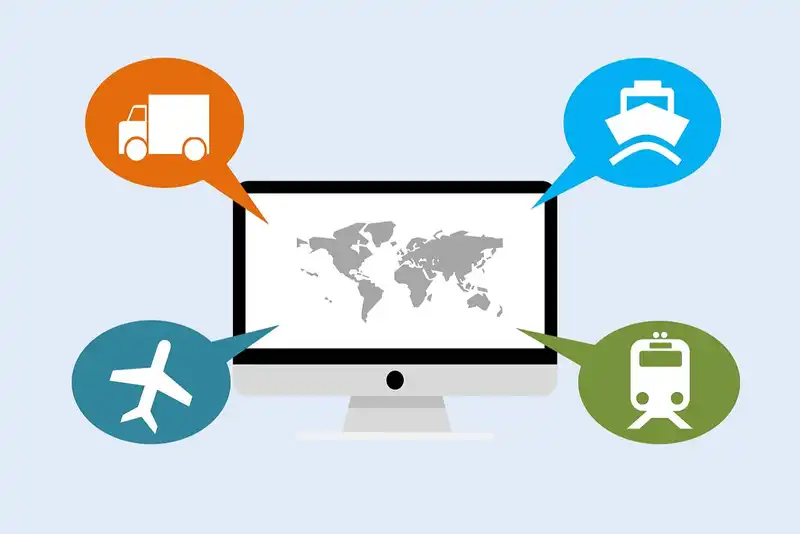What is demand planning?
Demand planning is a planning process used by retailers to help them understand and forecast customer demand. Demand forecasting is the act of predicting future demand, while supply forecasting is the act of predicting the maximum amount of products that will be needed to meet future demand. Demand planning helps retailers make better decisions about their inventory levels in order to maximize profitability and minimize total cost of ownership (TCO).
A Restaurant's Guide to Demand Planning- How It Works and Why You Need it
What is Demand Planning?
It's no secret that the ultimate goal of a business is to maximize revenue and profits. To secure high profits, a business needs to have an efficient supply chain. In order to optimize the supply chain, a business needs to conduct accurate demand planning.
Demand planning can be defined as the supply chain management process that helps meet consumers' demand for products, ensuring inventory optimization and avoiding disruptions in the supply chain. The goal of a demand plan is to have sufficient inventory levels without shoring up a surplus. A demand plan is also tied to planning supply, which works to make sure that a business has enough to meet customer demand.
The planning process includes analyzing sales data, customers trends and seasonal data to optimize a business's ability to meet customer demand efficiently. Planning demand is a combination of sales forecasting, inventory management and supply chain management. The demand planning process uses external and internal sources to forecast future demand, which allows a business to plan purchase or production in order to meet that demand.
Why is Demand Planning Important?

A restaurant loses business when products that customers demand are unavailable. But keeping excess stock just to make sure that stocks are available in case of demand can alternatively result in unused inventory and the blocking of cash. Demand management helps a business strike a balance between optimum inventory levels and demand, while staying ahead of market shifts.
The demand planning process involves coordination between the sales and marketing, purchase, supply chain, operations and finance departments. The demand planning process uses a pull philosophy which starts with customer demand, which is the base for all other operational planning. It is here that forecast accuracy plays a key role, as inaccurate demand forecasts can result in missed revenue opportunities and higher costs.
Nowadays most businesses opt for a demand planning software to process huge amounts of data and identify trends and patterns that make use of artificial intelligence and machine learning. Demand planners use these insights to make necessary adjustments to the planning op. The planning op is a lengthy process, but here are the key steps involved in the demand planning process that ensure optimum supply chain planning for maximum revenue-
1. Build a team- A good demand planning team should have members from the purchase and supply chain departments to chalk out inventory needs, as well as members from the finance team to calculate the cost of the actual demand forecast.
2. Gather relevant data- The relevant internal data needed for demand management includes sales data, inventory restock data and lead times, among other key metrics. Keep track in real time of price changes, marketing campaigns, new launches or promotions and competitor products. Also keep track of the external data like suppliers timelines and performance, customer purchasing habits and overall economic trends.
3. Opt for a demand forecast model- Decide which type of forecasting model works for your business forecasting demand by product and region. Your best bet is to use planning software. It's faster and error-free, compared to Excel sheets that require the manual input of data.
4. Review demand forecasts and inventory- Carry out periodic reviews of the demand forecasts against recent sales data and customer demand. Check if the demand forecast process aligns with the business' financial forecasts. Check the inventory levels, including safety stock that has to be maintained to fulfil the demand plan. Make sure your vendors can meet the demand plan.
5. Check the results- Identify key performance indicators like sales forecast accuracy, cost of goods sold and inventory turnover rate and set targets to measure how effective your demand planning process is. Carry a continuous review of the performance of these KPIs against the target set and adjust it if needed.
You want to see sizeable profits, but you’re not sure how to go about it.
Demand planning is a way for restaurants to make their business more efficient and profitable. This article will show you how it works, why it is important, and how to make the most of it for your business.
How Can Demand Planning Optimize the Supply Chain?

A supply chainfrom production to customer serviceserves demand for a product. In order to run efficiently and maximize profits, a business needs an accurate demand plan.
The process of supply chain forecasting takes a look at past supply data to help optimize operations planning, from inventory management to budget planning or expansion.
Demand planning is a part of supply chain planning. The planning process can help optimize the supply chain in the following ways-
1. Better resource allocation- A demand plan provides an accurate forecast of what customers want. The supply chain can then be optimized to meet only required inventory levels and a production schedule can be planned accordingly.
2. Inventory management- The planning process for demand helps a business optimize its inventory levels based on the demand forecast for a product. This avoids overstocking and understocking.
3. Vendor management- The planning op for demand guides the process of procuring raw materials for a product. This helps the purchase department better plan the buying process and approach vendors early in the game. It also strengthens vendor relations and helps negotiate better purchasing terms with them.
4. Reduce operating costs- Demand planning increases the efficiency of the supply chain and improves supply chain management. This results in lower operating costs on account of better inventory management and production. Demand planning thus also optimizes business planning.
5. Customer satisfaction- Demand planning is based on customer demand. Taking it into account, the supply chain can be streamlined to complete production and delivery on time, resulting in customer satisfaction.
Demand Planning Vs. Supply Planning- What's the Difference?

There's often confusion regarding demand planning and supply planning. The two terms are closely related, but dissimilar. The basic difference is that demand planning is based on predicting consumer demand in order to optimize supply chain operations, while supply planning is inventory management to meet the demand forecast.
Demand Planning
Demand planners have to use multiple sources, like historical data, data from advertising and marketing and even weather conditions to forecast customer demands. Demand planning has two types of demand forecasts- unconstrained demand forecasts and constrained demand forecasts.
Unconstrained demand forecasts focus on just the demand potential, without taking into account constraints such as business capacity or cashflow. Constrained demand forecasts take into account the limits a business has while setting a goal. Most restaurants opt for integrated business planning which include unconstrained and constrained demand forecasting.
Supply Planning
Supply planning works to complete the demand plan while keeping in mind the financial and service goals. It factors in inventory production and logistics such as planned and received orders, current inventory, lead times, minimum order quantities and safety stocks.
The goal of supply planning is to optimize supply to fulfil demand for the product in the best way possible. Vendor-managed inventory, inventory visibility and flexible manufacturing are some best practices to follow.
How Can Restaurants Plan Demand Forecast?

After looking at how demand planning and forecasting helps a restaurant manage its business better, we now look at how a restaurant can forecast demand.
1. Inventory forecast- A restaurant can forecast demand by tracking and analyzing inventory purchasing for the past year. Reviewing older demand planning processes can help spot errors and maintain an optimal level of inventory.
2. Using historical data- Compare past demand forecast with actual demand to prepare a demand plan for the future. Contrast inventory for a particular period in the current year with that of the previous year to spot variations and to help forecast demand for the upcoming period.
3. External forces and trends- While making a demand plan, account for external circumstances, such as holidays, events, weather, or market changes that may have impacted the numbers from the previous period. Adjust the demand plan for current factors such as shifts in demand or supply.
4. Customer spends and demands- Check historical data to track customer spend for a particular period. Also track customer preferences during a particular period to plan demand forecasts for the future.
5. Staffing- Check past employee scheduling to determine how much labor you need in real time and create forecast for future employee schedules. Looking at the historical data will give you an idea of the staff required for each schedule and also offer insights into when employees can take time off.
You’re a new restaurant owner who wants to execute demand planning effectively, but doesn’t quite know how.
This article tells you everything you need to know about demand planning, and helps you execute it immediately.
Top 5 Demand Planning Software Solutions

A good demand planning software solution for a restaurant should have the following features-
Apart from forecasting, it should have tools for inventory management, sales and operations planning, and capacity planning.
The planning software should have tools for data management that are easy to access and understand and can simplify analytics.
Cloud-based demand planning software will manage workflows that grow more complex as the business grows, ensuring that you can scale up your requirements by simply switching to a different subscription model.
A good software for planning demand should have tools for integrated business planning so that it can work with other digitized processes such as human resources management or enterprise resources planning to encourage collaboration.
After looking at the features a good demand planning software must have, here are the top options for your business-
1. Zip Forecasting- This app from the Hubworks restaurant app store automates sales forecasts and demand planning. The app accesses real time and historical data from point of sale (POS) and inventory tracking software to improve forecasts. It even takes weather into account for planning future events.
2. SAP Integrated Business Planning- This cloud based solution provides forecasting and demand management tools for short-term, mid-term, and long-term forecasting. It also provides tools for inventory optimization.
3. Oracle Demantra- This cloud-based software looks after demand management, sales and operations planning, and trade promotions management. It allows users to create simulated scenarios with factors such as changed pricing.
4. Demand Planning- This software uses machine learning to provide an unbiased demand projection, enabling higher planner productivity, better inventory management and an improved understanding of demand drivers and customer behavior.
5. Demand Solutions- This software provides supply and demand planning tools with a user-friendly interface to reduce cost and increase profit. It has powerful forecasting models with good accuracy.
Demand Management FAQs

Q. What is demand management?
A. Demand management is a process that recognizes demand for a product and enables a business to adapt and create processes to meet variations in demand using marketing or supply chain management strategies. Demand management is similar to the demand planning process, but it's a short-term look at consumer demand.
Q. What are the types of demand forecasting?
A. Types of demand forecasting are-
1. Passive demand forecast uses sales data from the past to predict the future.
2. Active forecasting demand takes note of market research, marketing campaigns and expansion plans and factors in economic outlook, growth projections and projected cost savings from supply chain efficiencies.
3. Short-term projections is useful for managing your just-in-time supply chain.
4. Long-term projections focuses on shaping your business growth trajectory.
5. External macro forecasting looks at how trends in the broader economy will affect your goals and recommends ways to meet those goals.
6. Internal business forecasting uncovers limitations and untapped areas of opportunity. It also factors in financing, cash on hand, profit margins, supply chain operations, and personnel.
Q. How to calculate restaurant sales forecast?
A. The sales forecast formula for a restaurant is the average number of Guests X average money spent per person X number of operational days. The formula can be adjusted to make it work for a week, month, season, or even a year. Revisit the formula to check how accurate your sales forecasting and inventory projections are.
You’re always looking for ways to improve your restaurant, but how do you know when it’s time to implement a new strategy?
Demand planning is the key. Read this article and learn the different ways demand planning can be beneficial to your business.

